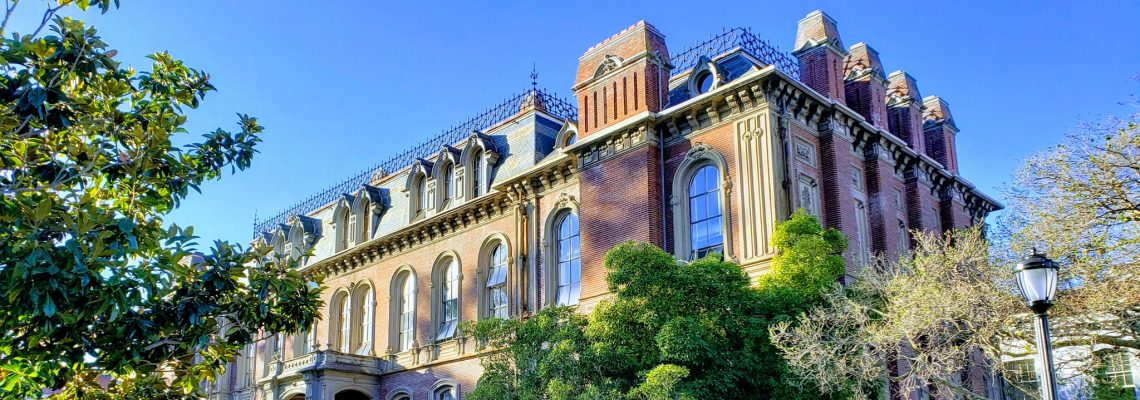Backstage Decisions, Front-stage Experts: Interviewing Genome-Editing Scientists
by Santiago Molina and Gordon Pherribo, CTSP Fellows
This is the first in a series of posts on the project “Democratizing” Technology: Expertise and Innovation in Genetic Engineering
When we think about who is making decisions that will impact the future health and wellbeing of society, one would hope that these individuals would wield their expertise in a way that addresses the social and economic issues affecting our communities. Scientists often fill this role: for example, an ecologist advising a state environmental committee on river water redistribution [1], a geologist consulting for an architectural team building a skyscraper [2], an oncologist discussing the best treatment options based on the patient’s diagnosis and values [3] or an economist brought in by a city government to help develop a strategy for allocating grants to elementary schools. Part of the general contract between technical experts and their democracies is that they inform relevant actors so that decisions are made with the strongest possible factual basis.
The three examples above describe scientists going outside of the boundaries of their disciplines to present for people outside of the scientific community “on stage” [4]. But what about decisions made by scientists behind the scenes about new technologies that could affect more than daily laboratory life? In the 1970s, genetic engineers used their technical expertise to make a call about an exciting new technology, recombinant DNA (rDNA). This technology allowed scientists to mix and add DNA from different organisms; later giving rise to engineered bacteria that could produce insulin and eventually transgenic crops. The expert decision making process and outcome, in this case, had little to do with the possibility of commercializing biotechnology or the economic impacts of GMO seed monopolies. This happened before the patenting of whole biological organisms [5], and the use of rDNA in plants in 1982. Instead, the emerging issues surrounding rDNA were dealt with as a technical issue of containment. Researchers wanted to ensure that anything tinkered with genetically stayed not just inside the lab, but inside specially marked and isolated rooms in the lab, eventually given rise to well-established institution of biosafety. A technical fix, for a technical issue.
Today, scientists are similarly engaged in a process of expert decision making around another exciting new technology, the CRISPR-Cas9 system. This technology allows scientists to make highly specific changes, “edits”, to the DNA of virtually any organism. Following the original publication that showed that CRISPR-Cas9 could be used to modify DNA in a “programmable” way, scientists have developed the system into a laboratory toolbox and laboratories across the life sciences are using it to tinker away at bacteria, butterflies, corn, frogs, fruit flies, human liver cells, nematodes, and many other organisms. Maybe because most people do not have strong feelings about nematodes, most of the attention in both popular news coverage and in expert circles about this technology has had to do with whether modifications that could affect human offspring (i.e. germline editing) are moral.
We have been interviewing faculty members directly engaged in these critical conversations about the potential benefits and risks of new genome editing technologies. As we continue to analyze these interviews, we want to better understand the nature of these backstage conversations and learn how the experiences and professional development activities of these expects influenced their decision-making. In subsequent posts we’ll be sharing some of our findings from these interviews, which so far have highlighted the role of a wide range of technical experiences and skills for the individuals engaged in these discussions, the strength of personal social connections and reputation in getting you a seat at the table and the dynamic nature of expert decision making.
[1] Scoville, C. (2017). “We Need Social Scientists!” The Allure and Assumptions of Economistic Optimization in Applied Environmental Science. Science as Culture, 26(4), 468-480.
[2] Wildermuth and Dineen (2017) “How ready will Bay Area be for next Quake?” SF Chronicle. Available online at: https://www.sfchronicle.com/news/article/How-ready-will-Bay-Area-be-for-next-big-quake-12216401.php
[3] Sprangers, M. A., & Aaronson, N. K. (1992). The role of health care providers and significant others in evaluating the quality of life of patients with chronic disease: a review. Journal of clinical epidemiology, 45(7), 743-760.
[4] Hilgartner, S. (2000). Science on stage: Expert advice as public drama. Stanford University Press.
[5] Diamond v Chakrabarty was in 1980, upheld first whole-scale organism patent (bacterium that could digest crude oil).
